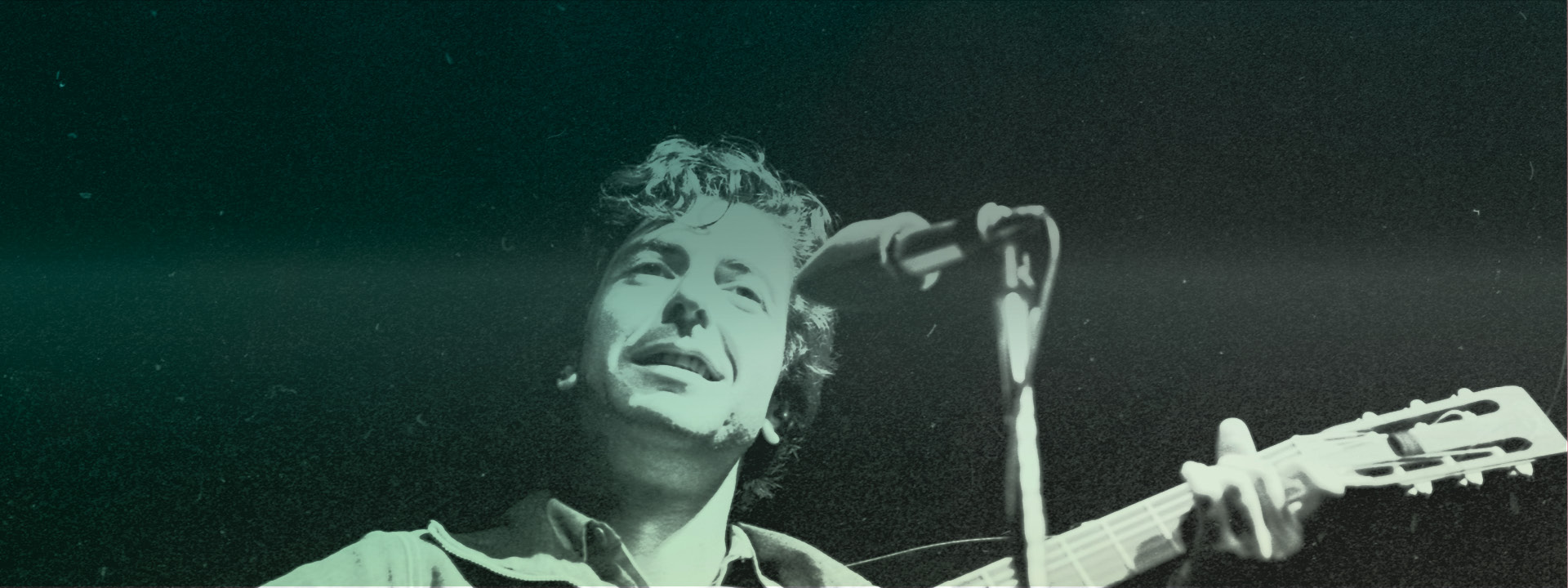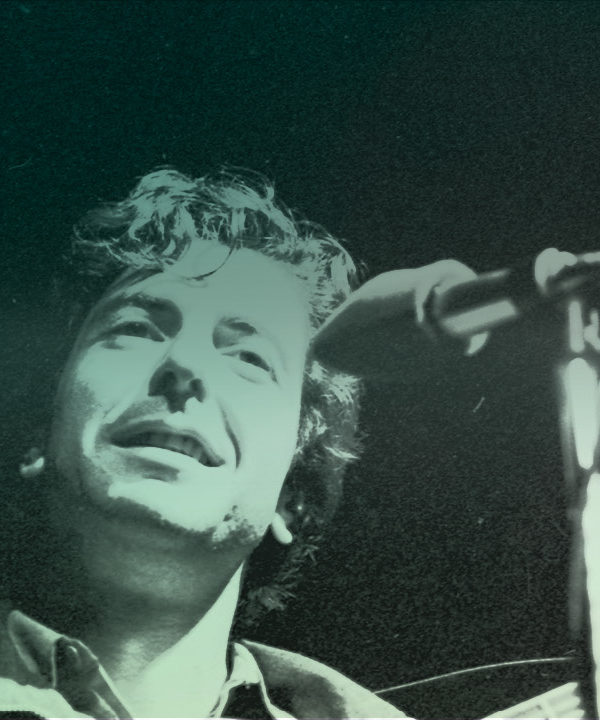“It’s Politically Approved”
In 1965 – two years after the riots in Orillia and one year after a court injunction barred the festival from Medonte Township – the success of the Mariposa Folk Festival depended on balancing between celebrating the freedoms of 1960s counterculture and assuring crowd control.

Permission to hold the festival at Innis Lake in the Caledon Hills wasn’t easily won over. The first night of music was planned for August 6, but in mid-July organizers still didn’t know if they had the go-ahead. Festival president Randy Ferris had “interminable” conversations with the Ontario Provincial Police about security planning. He hired a private security firm and filled them in on every detail of planning—from the St. John Ambulance crews that would be on-site to the task of filling in groundhog holes around the natural amphitheatre. Ferris contacted local representatives in the Ontario legislature, including future premier Bill Davis, asking for high-level political backing. He even wrote to J. Edgar Hoover, long-standing director of the FBI, to request a copy of the US Justice Department’s publication Prevention and Control of Mobs and Riots. Hoover personally wrote a letter in response.
A $1,000,000 insurance policy against property damage helped convince Albion Township leaders to allow the festival to go on at Innis Lake. Exonerated from the troubled reputation that had plagued Mariposa since 1963, Ferris and festival co-producers came up with the slogan for 1965: “It’s Politically Approved.”
Festivalgoers wended their way to the 25-acre site along a gravel road 60 kilometres northwest of Toronto to see headliners Ian & Sylvia play “Four Strong Winds.” Gordon Lightfoot, John Hammond, the Country Gentlemen, Phil Ochs, the Allen Ward Trio, and the Dirty Shames were among the 20 folk acts to play that year. In between performances and workshops, revellers could swim in the lake, compete in a canoe race, or take their children to the playground.
When it came time to pack up at the end of the festival weekend, around 100 security personnel were on hand to clear the local fields of campers. However it turned out that the crowd consisted mostly of families with small children, and went home peacefully of their own accord.
Joni Who?

Source: Mariposa Folk Foundation
In the year prior to Mariposa 1965, The Beatles hit America and musical tastes were shifting away from folk to rock ’n’ roll. Even Bob Dylan traded in his acoustic guitar for an electric set at the 1965 Newport Folk Festival, albeit to the boos of fans who still preferred traditional folk. The Vietnam War was raging and audiences came in droves to hear Pete Seeger sing his protest songs ‘Where Have All the Flowers Gone?’ and ‘Turn! Turn! Turn!’
The stars of Mariposa brought in the crowds, but performing at Innis Lake was also a chance for unknowns to make a name for themselves. The festival’s artistic director, Estelle Klein, was at a coffee house in Toronto when she saw a young performer named Joni Anderson. Though the program was already full for 1965, Klein made room for Joni to play a few songs and join a workshop. ‘Circle Game’ was among her original songs showcased that year, and audiences were impressed by the young blond talent. Klein encouraged Joni to expand her repertoire for the following year. Many of those songs are now part of the canon of Canadian music, made famous worldwide by the icon we all know as Joni Mitchell.
Equal Pay, Equal Rights
By 1966 the festival had earned its reputation as an important staging ground for both established and up-and-coming artists. All the performers, no matter where they were in their careers, accepted equal pay for being there – $175 plus expenses, which was minimum wage according to the musicians’ union. With names like Gordon Lightfoot compensated at the same rate as relative unknowns like Joni Anderson, organizers kept festival expenses down. At the same time ticket sales went up. More than 10,000 attended for a price of about $3 a day, plus $2.50 for workshops, or $10 for an all-inclusive weekend pass. The festival was finally on solid financial footing.
Equality was not just financially smart. It was an ethos that worked to blend diverse musical genres at Mariposa in a way that seemed as natural as the campground setting. Protest songs were still the stronghold of Mariposa music, while gospel revival acts from the South got the crowd of more than 10,000 clapping their hands.

Source: Mariposa Folk Foundation
Pete Seeger, blacklisted by McCarthy for un-American Activities for over a decade by now, shared the Mariposa stage with rhythm and blues group the Staple Singers, and the masses cheered. Phil Ochs played popular anthems in support of civil rights and the antiwar movement, including “The Draft Dodger Rag”. To bring Tom Paxton’s antiwar songs to Mariposa that year, festival organizers had to get special permission from the immigration department for him to cross the border. And Carolyn Hester haunted the audience with her rendition of Paxton’s song “Goodman, Schwerner and Chaney,” about three civil rights activists murdered in Mississippi. The festival was not simply musical entertainment; it was part of the vanguard of 1960s social movements.
With the opportunities it provided to emerging artists, Mariposa also became the launch pad for some of the 20th century’s greatest songwriters. “Hippie poet-singer” Leonard Cohen—as labelled by the Toronto Star —first walked onto the Mariposa stage in 1967. Buffy Sainte-Marie was the star of the festival that year. Other favourites such as Ritchie Havens also pulled in the crowds. A young Alanis Obomsawin—now celebrated Indigenous filmmaker—opened the 1967 Friday night set with Abenaki songs.
Estelle Klein and the Workshop

Source: Mariposa Folk Foundation
The workshop was the brainchild of Mariposa’s artistic director Estelle Klein, and at Innis Lake she began to refine the concept. Away from the Main Stage, audiences could connect with musicians in a more intimate setting and learn about the art of songwriting. Workshops covered themes like Ontario songs, international songs, blues and gospel, guitar styles, and banjo picking. In 1966 about 200 festivalgoers brought their own instruments and picked up guitar techniques from the likes of Doc Watson and Roebuck “Pops” Staples. Klein reached out to the Canadian Indian Dancers, as well, and invited them to lead a workshop on Indigenous hoop dances, war dances, an eagle dance, and fire dance.
“Estelle was a unique person indeed,” said Irish folk singer Owen McBride. “She had a real love for and understanding of folk music. She had this ability to make you feel you were the most important person in the room.”
Growing Up

Source: Mariposa Folk FOundation
By the end of the Innis Lake years in 1967, the festival had matured. With perseverance organizers had found a welcoming space to hold the festival and showcase diverse performers. Mariposa was reasonably stable financially – its reputation among musicians and the public was strong, and its future was no longer in doubt. The three years at Innis Lake provided a solid foundation to build on as Mariposa headed for Toronto Island and the 70s.

